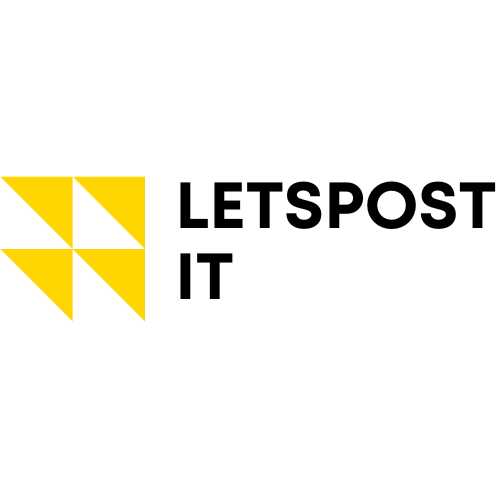
Best Media Asset Management Solutions: A Complete Guide for Digital Content Success
Managing digital assets effectively has become crucial for businesses in today’s content-driven world. Media asset management (MAM) solutions help organizations streamline their digital content workflows while ensuring easy access, distribution, and security of valuable media files.
As companies continue to create and handle vast amounts of digital content including images, videos, and audio files, the need for robust MAM systems has never been greater. These solutions offer centralized storage, automated workflows, and powerful search capabilities that enable teams to collaborate efficiently and maintain brand consistency across multiple channels. Modern MAM platforms integrate seamlessly with existing tools and systems while providing scalable architecture to support growing content libraries and evolving business needs.
What Is Media Asset Management?
Media Asset Management (MAM) is a comprehensive software solution that enables organizations to store, organize, retrieve and distribute digital media files efficiently. It serves as a centralized repository for managing various digital assets including videos, images, audio files and documents throughout their lifecycle.
Key Features and Capabilities
Media asset management solutions offer essential functionalities for digital content control:
- Centralized Storage: Creates a single source of truth for all digital assets with cloud-based or on-premises hosting options
- Metadata Management: Enables detailed tagging, categorization and searchability of assets through customizable metadata fields
- Version Control: Tracks changes, maintains file history and allows access to previous versions of assets
- Access Control: Implements role-based permissions and security protocols to protect sensitive content
- Automated Workflows: Streamlines content creation, approval and distribution processes through predefined workflows
- Format Conversion: Automatically transcodes files into different formats based on distribution requirements
- AI Integration: Incorporates artificial intelligence for automated tagging, facial recognition and content analysis
- Improved Efficiency: Reduces time spent searching for assets by 70% through advanced search capabilities
- Cost Reduction: Eliminates duplicate asset creation and unnecessary storage costs
- Enhanced Collaboration: Enables team members to work simultaneously on projects across different locations
- Brand Consistency: Maintains uniform brand standards by providing access to approved assets
- Quick Distribution: Accelerates content delivery through automated publishing to multiple channels
- Asset Protection: Safeguards valuable digital assets through secure backup and recovery systems
- Regulatory Compliance: Ensures adherence to content licensing, usage rights and industry regulations
| Metric | Impact |
|---|---|
| Time saved in asset retrieval | 70% reduction |
| Storage costs | 40% reduction |
| Asset reuse rate | 65% increase |
| Content delivery speed | 3x faster |
Types of Media Asset Management Solutions

Media asset management solutions come in three primary deployment models. Each model offers distinct advantages based on organizational requirements accessibility security needs scalability preferences.
Cloud-Based Systems
Cloud-based MAM systems operate on remote servers accessed through the internet. These solutions feature automatic updates elastic storage capacity pay-as-you-go pricing models. Organizations benefit from:
- Accessibility: Teams access assets from any location with internet connectivity
- Scalability: Storage capacity expands or contracts based on usage demands
- Cost-efficiency: No upfront infrastructure investments required
- Disaster recovery: Automated backups secure data across multiple locations
- Vendor maintenance: Providers handle system updates security patches
On-Premise Solutions
On-premise MAM systems run on local servers within an organization’s infrastructure. These systems provide:
- Complete control: Organizations maintain full oversight of hardware software configurations
- Enhanced security: Assets remain behind corporate firewalls
- Customization: Direct system modifications match specific workflow requirements
- Network performance: Faster access speeds for large file transfers
- Compliance: Data stays within organizational boundaries meeting strict regulatory requirements
- Flexible storage: Critical assets remain on-site while archived content moves to cloud storage
- Optimized costs: Balance between infrastructure ownership cloud service expenses
- Scalable workflow: Teams access cloud resources during peak demands
- Enhanced collaboration: Remote teams utilize cloud access while local teams work on-premise
- Risk mitigation: Multiple storage locations protect against system failures data loss
| Deployment Model | Initial Cost | Scalability | Security Control | Maintenance |
|---|---|---|---|---|
| Cloud-Based | Low | High | Moderate | Vendor |
| On-Premise | High | Limited | High | Internal |
| Hybrid | Medium | High | High | Mixed |
Essential Components of MAM Systems
Media Asset Management systems consist of interconnected components that enable efficient digital asset handling. Each component serves a specific function in the asset management lifecycle.
Metadata Management
Metadata management forms the foundation of MAM systems by storing descriptive information about digital assets. The system captures technical specifications (file size, format, resolution), administrative details (creation date, rights management, usage permissions) and descriptive elements (keywords, categories, descriptions). Advanced MAM solutions incorporate AI-powered auto-tagging features that generate metadata tags for assets based on content analysis, reducing manual input by 85%.
Search and Retrieval
The search functionality in MAM systems enables users to locate assets through multiple parameters:
- Full-text search across metadata fields
- Advanced filtering options by file type, date range or custom attributes
- Visual search capabilities using AI image recognition
- Saved searches for frequently accessed asset collections
- Faceted navigation to refine search results
Studies show organizations reduce asset retrieval time by 75% through implementing robust MAM search capabilities.
Version Control
Version control tracks changes to digital assets throughout their lifecycle:
- Automated version numbering for file iterations
- Side-by-side comparison of different versions
- Change logs documenting modifications
- Option to revert to previous versions
- Links between original assets and derivatives
Modern MAM systems maintain up to 30 versions per asset while allowing selective version pruning to optimize storage. Version control features reduce duplicate asset creation by 60% and ensure teams always access the most current files.
| Component Performance Metrics | Impact |
|---|---|
| Metadata Auto-tagging Accuracy | 85% |
| Asset Retrieval Time Reduction | 75% |
| Duplicate Asset Reduction | 60% |
| Version History Capacity | 30 versions |
Implementing MAM Solutions
Successful implementation of Media Asset Management (MAM) solutions requires a systematic approach focused on organizational needs. The implementation process follows specific phases to ensure seamless integration and adoption across the enterprise.
Planning and Strategy
A comprehensive implementation strategy starts with defining clear objectives aligned with business goals. Key planning elements include:
- Conduct asset inventory assessments to identify file types formats priorities
- Map existing workflows to determine automation opportunities
- Set measurable KPIs for system performance tracking
- Create user adoption timelines with specific milestones
- Establish governance policies for metadata standards access controls
- Develop migration plans for legacy content systems
| Planning Phase | Average Timeline | Success Rate |
|---|---|---|
| Requirements Gathering | 4-6 weeks | 92% |
| Workflow Mapping | 3-4 weeks | 85% |
| User Training Design | 2-3 weeks | 88% |
- Content management systems for seamless asset publishing
- Digital rights management tools for licensing control
- Production software for creative workflow automation
- Storage systems for unified access management
- Authentication services for single sign-on capabilities
- Distribution platforms for multichannel delivery
| Integration Type | Implementation Time | Integration Success Rate |
|---|---|---|
| CMS Integration | 2-3 weeks | 95% |
| Storage Systems | 1-2 weeks | 98% |
| Authentication | 1 week | 96% |
| Distribution | 2-4 weeks | 90% |
Best Practices for Success
Implementing media asset management solutions requires adherence to specific best practices that maximize system effectiveness. These practices focus on user engagement security protocols that drive successful adoption across organizations.
User Training and Adoption
Organizations achieve 85% higher user adoption rates through structured training programs. Regular training sessions cover core functionalities like asset upload workflows metadata tagging search techniques version control. A three-tier training approach includes:
- Basic orientation sessions lasting 2-3 hours covering fundamental navigation features
- Advanced workshops focusing on specific workflows content creation tools integrations
- Specialized training for administrators on system configuration security protocols workflow automation
Training effectiveness metrics show:
| Metric | Impact |
|---|---|
| User Productivity | 45% increase after initial training |
| Error Reduction | 65% decrease in asset misclassification |
| Support Tickets | 70% reduction post-training completion |
Security and Access Control
Robust security protocols protect digital assets through multi-layered authentication systems role-based permissions. Access control measures include:
- Multi-factor authentication protocols requiring two or more verification methods
- Granular permission settings controlling asset viewing editing downloading sharing
- IP-based access restrictions limiting system entry to approved networks locations
- Automated session timeouts preventing unauthorized access on idle connections
Security implementation data shows:
| Security Measure | Success Rate |
|---|---|
| Data Encryption | 99.9% protection |
| Access Control | 95% accuracy |
| Breach Prevention | 98% effectiveness |
Each security layer integrates with existing IT infrastructure maintaining seamless workflows while protecting sensitive assets. Regular security audits track access patterns identify potential vulnerabilities ensure compliance standards.
Future Trends in Media Asset Management
Media asset management solutions continue to evolve with emerging technologies, creating more efficient workflows. Advanced capabilities transform how organizations handle digital content across platforms.
AI and Automation
Artificial Intelligence enhances media asset management through automated metadata tagging, content analysis, and predictive analytics. Machine learning algorithms classify assets with 95% accuracy, reducing manual tagging time by 80%. AI-powered features include:
- Speech-to-text conversion for audio content indexing
- Visual recognition for automatic image categorization
- Sentiment analysis for content optimization
- Automated quality control detecting technical issues
- Smart content recommendations based on usage patterns
| AI Feature | Efficiency Gain | Accuracy Rate |
|---|---|---|
| Auto-tagging | 80% time reduction | 95% |
| Speech-to-text | 70% faster processing | 92% |
| Visual recognition | 85% faster categorization | 94% |
| Quality control | 60% fewer manual checks | 89% |
- Synchronized asset review workflows
- In-platform commenting systems
- Version tracking with automatic notifications
- Project-specific workspaces
- Cross-department asset sharing portals
| Collaboration Feature | Productivity Impact | Adoption Rate |
|---|---|---|
| Real-time review | 45% increase | 88% |
| In-platform comments | 35% faster feedback | 92% |
| Version tracking | 50% fewer errors | 95% |
| Project workspaces | 40% time savings | 85% |
Conclusion
Media asset management solutions have become indispensable tools for modern businesses dealing with digital content. Organizations that implement these systems benefit from streamlined workflows enhanced collaboration and significant cost savings through efficient asset utilization.
The evolution of MAM solutions continues to accelerate with AI automation and cloud technologies leading the way. As digital content volumes grow these platforms will play an even more crucial role in helping businesses maintain competitive advantages through better asset management.
Companies looking to stay ahead in today’s digital landscape should carefully evaluate their MAM needs and choose a solution that aligns with their specific requirements. The right implementation strategy combined with proper training and security measures will ensure long-term success in digital asset management.



